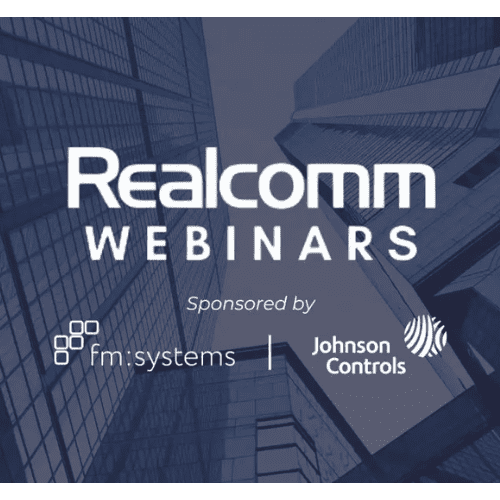Smart Building Tech: Revolutionizing Efficiency for Cost-Effective Futures
About the Recording
Industry leading panelists will focus on efficient “smarter” buildings, unraveling the latest new technologies providing real ROIs. Discover the art of seamlessly integrating multiple data sources, from sensors to lighting and movement, to create a holistic building intelligence solution. Learn how to enhance security measures and navigate the roadmap for AI-related tools, unveiling early testing results. Examine each detail in real-world scenarios through case studies involving actual deployment in back office, built environment and business process automation.
Peer into the future with predictive analytics, consider the impact of regulations and governance and explore the actual business outcomes of these transformative technologies. Join us in deciphering the evolving language of intelligent infrastructure.



Speakers






Watch the Recording
Episode Transcription
Nada Sutic 0:00
I’m with Vineet the VP of Open Blue Enterprise Solutions with Johnson Controls is joining us. So over to you, Vineet and what we’ll let you go through your slide deck and and then we’ll get into questions.
Vineet Sinha 0:12
Sounds great. Thank you. And hello, everyone and thank you for joining the webinar today. In my role as Vice President of Open Blue Enterprise Solutions at Johnson Controls, I have the privilege of working with customers around the globe in pursuit of their business goals with sustainable, smart and healthy buildings. Johnson Controls obviously has a massive portfolio of offerings right for smart buildings spanning building automation systems, equipment, fire security, etc. And our digital portfolio now includes both the open flow as well as the FM:Systems portfolio, which helps us cover all major customer outcomes around energy efficiency and sustainability, facility management, integrated workplace management, and healthy buildings.
Over the last five years, we have deployed our technology to 1000s of buildings across the globe, enabling adoption of energy management, remote monitoring, condition based maintenance, and enhanced operating efficiency solutions. Customers continue to pursue the next major frontier of adopting technology that will help them meet their carbon reduction goals, substitute expensive and hard to find labor, and then meet evolving needs of occupant productivity in their hybrid workplaces. All of this, encompassing what is known as a smart building today, our mission now is to accelerate that evolution to autonomous buildings, augmenting the volumes of data and insights on spaces and equipment with artificial intelligence, resulting in closed loop automation that can be executed at scale across an enterprise.
When we think about integrations, the greatest value emerges when we intersect data from multiple sources to produce insights that are either tough or expensive to find with legacy technology. Let’s take the example of correlating weather normalized energy data with occupancy and indoor air quality, giving building managers the right levers to pull based on their tenant demands, certification needs, and regulatory mandates.
So when customers are thinking about smart and cognitive spaces of the future, our discovery design and deployment plan factors in four key areas. Number one, which when which many of the speakers talked about secure connectivity across both the modern and legacy subsystems. Second, creation of that clean data layer with tagging and normalization to power the suite of user facing applications.
The third, actual use cases, workflows, outcomes that are embedded in the applications and tailored for each user persona, which from our perspective, can span a building operator, a maintenance technician and Energy Manager or even a senior executive.
And very importantly, help our customers with training, job aids, best practices and reference examples to drive change management in their own operations. I cannot emphasize enough on the importance of these last two pieces, right? Because end of the day, technology can take you so far. And you need a user adoption and we have value realization to maximize impact on business. So that takes me to the case study examples right starting with the first one, which is a leading asset management company with a portfolio of diversified assets, including real estate infrastructure across 20 countries. Right.
So this is a customer that has a lot of systems today, and is in the business on investing in their facilities, modernizing them, leasing them and eventually reselling them. From their perspective, the greatest need was agility in their building operations, you know, be successful in meeting increasing expectations both from their corporate leadership, as well as tenants and plus add on regulatory and certification needs.
Second, a much greater emphasis on sustainability with decarbonisation, which was adding on to the pressure of managing energy costs. And third, with all of these buildings and for more insights, as they experienced densification of sensors, they also needed a robust technology stack that could protect against cyber threats and data breach events. So our solution here focused on using common you know, the open blue solution as a technology integration backbone, right? Bringing data from more than 10 building management systems from a lot of different sensor platforms or external data sources, help them establish KPIs and benchmark current performance and then identify future operational performance and savings. Right this is the spends a lot of different systems in their buildings and has helped automate, simplify and, and, you know, AI enable a lot of different processes across their portfolio.
My next example completely different types of facilities right now, we are not talking Class A office spaces or hotels or retail infrastructure right now we are talking about customer with a portfolio of warehouses right for for industrial and logistic needs. By right now, these are really not well sensor eyes buildings, nor do they use the most complex building management systems. So forth from their perspective, it was most important to have the right the right layer of technology using sensors simplified unification methods, and have the right level of insights which could be used to still automate all of the data collection, monitoring and reporting practices, wide validation of utility bills, identification of energy conservation measures, and then pretty much create a template that could be deployed and scaled across each of their facilities.
So importantly, as building owners operators think about an efficient and cost effective future, there are so many levers in their control. So thinking about Day Zero, day one needs is super important, but so is thinking about future proofing those technology choices. So your investments can stack up nicely to a productive future. The success of smart building implementations is now more than a technology challenge, right? It’s the continued change management and adoption that can unlock several areas of value and prepare you for a future that will have a lot more artificial intelligence embedded in your day to day workflows.
So that’s all I had today. Nada. If you have the time, that’s two questions.
Nada Sutic 6:36
Yeah, absolutely. Thanks Vineet and, you know, thanks for sharing, you know, couple of different case studies that show a different level of scale. Right. I think that’s, that’s really important to, I think, for our audience to understand that there are applications that do make sense for industrial.
And so I wanted to start with, obviously, Johnson Controls being a major supplier of control systems and equipment, buildings, you know, from looking at open blue. And from that perspective, you know, how do you think of connectivity to your own systems versus other providers? So coming back to that interoperability discussion?
Vineet Sinha 7:10
Yeah, thanks. Thanks. Not all right. I mean, the open and open glue was designed to suggest that we will and will remain OEM agnostic, right? We have invested tremendously in our edge technologies, right. And like the previous speaker, right, I mean, we will work with with other solutions out there, right, which might exist in a building or can be used to simplify data aggregation. We also have a robust edge technology stack. And over the last two years have made acquisitions like, like tempered networks and fog on AI, that have helped us create an Edge platform that supports a suite of protocols established the right level of cyber protection, and health stream data to the cloud, where tagging and normalization can make it really easy for consumption, whether it’s for first party applications or third party applications.
Nada Sutic 7:57
Awesome. And then you talked about the technology platform. And obviously, there’s a lot of sensors and so on involved. So you just sort of touched a little bit on on partners and vendors. So can you tell us a little bit more like about that network of partners that your customers can rely on?
Vineet Sinha 8:13
Yeah, so we have been, you know, working both with our in house software teams, as well as our partners to develop a suite of connectors today, we have over 100 As part of our library out of the box, right, which which connect to a lot of different JCI variations and a lot of other third party systems, sensor platforms, etc. Right. And that will continue to be our mission, right? And we want to make it really simple for our customers or partners. And in some cases, it even might be our competitors to embed some of this connectivity, right? End of the day, we are all here to serve our customers, right? So we have to all work customer back and plug in these systems in the right way to give them something that that both delivers value and helps it speak to you.
Nada Sutic 8:56
Yeah, now that’s awesome. And I’d say as a customer, you know, appreciate that because it that is our reality. And there’s you know, we can’t change everything in an existing building in one fell swoop. So that interoperability is so critical for us.
Vineet Sinha 9:11
Absolutely.
Nada Sutic 9:12
Awesome.

